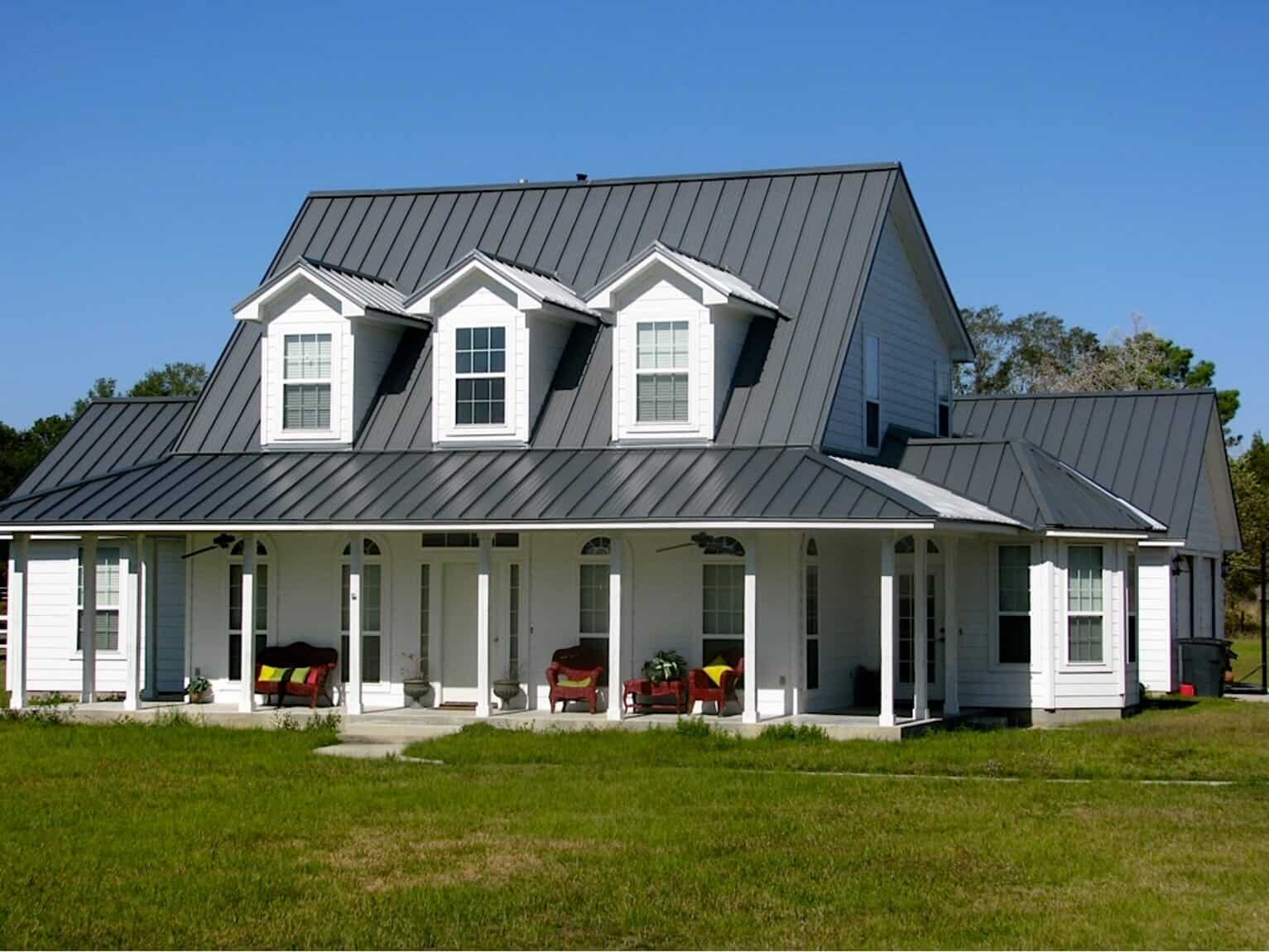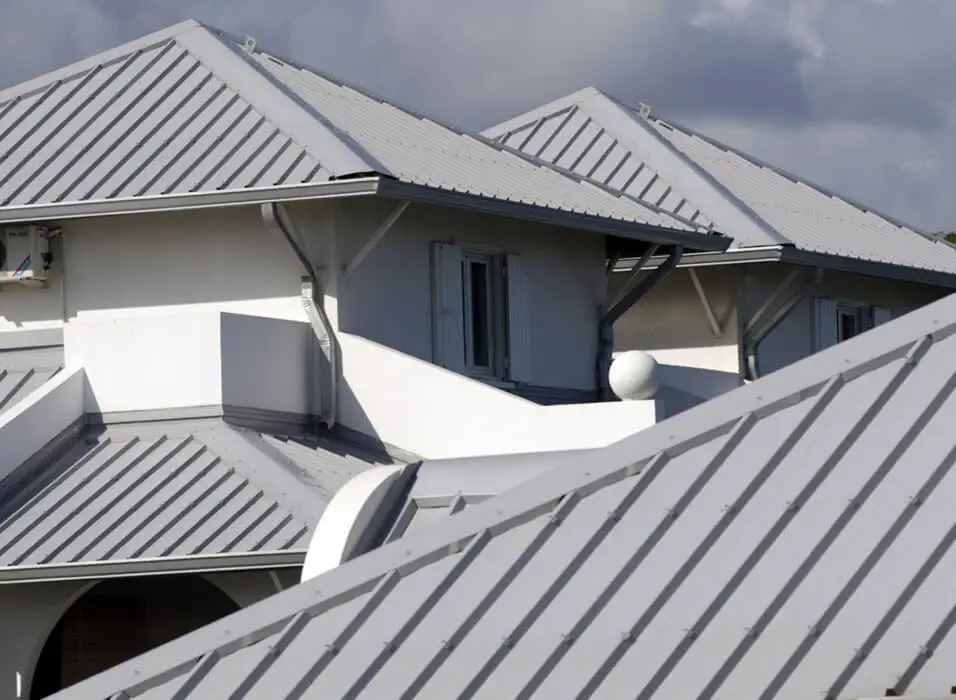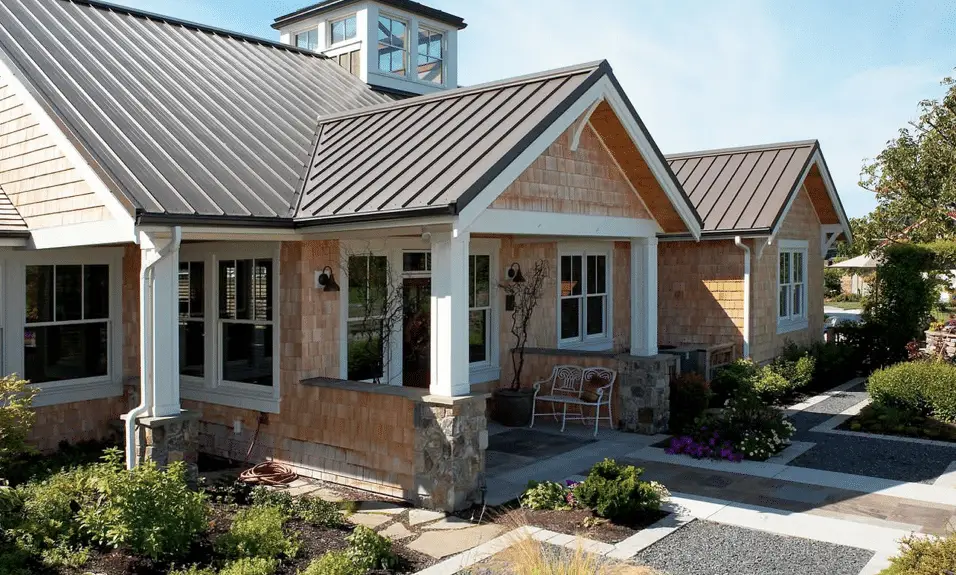How To Install A Metal Roof Over Shingles
Introduction
How To Install A Metal Roof Over Shingles: Before delving into the installation process, it is essential to understand the advantages of opting for a metal roof. Metal roofs are known for their exceptional durability, often lasting two to three times longer than traditional asphalt shingle roofs. They are resistant to cracking, shrinking, and eroding, making them an excellent long-term investment for homeowners.
In addition to their durability, metal roofs are highly energy-efficient. They reflect solar radiant heat, reducing cooling costs during hot summer months. This energy efficiency can lead to significant savings on your utility bills over time.
Now that you understand the benefits of a metal roof, let’s dive into the installation process. Evaluate the Existing Roof: Before beginning the installation, thoroughly inspect the existing shingle roof. Ensure that it is in good condition and free from any damage or leaks. If there are any issues, address them before proceeding with the metal roof installation. Gather the Necessary Materials: To install a metal roof over shingles, you will need a variety of materials, including metal panels, roofing screws, underlayment, flashing, and ridge caps. Make sure to gather all the required materials before starting the installation process.
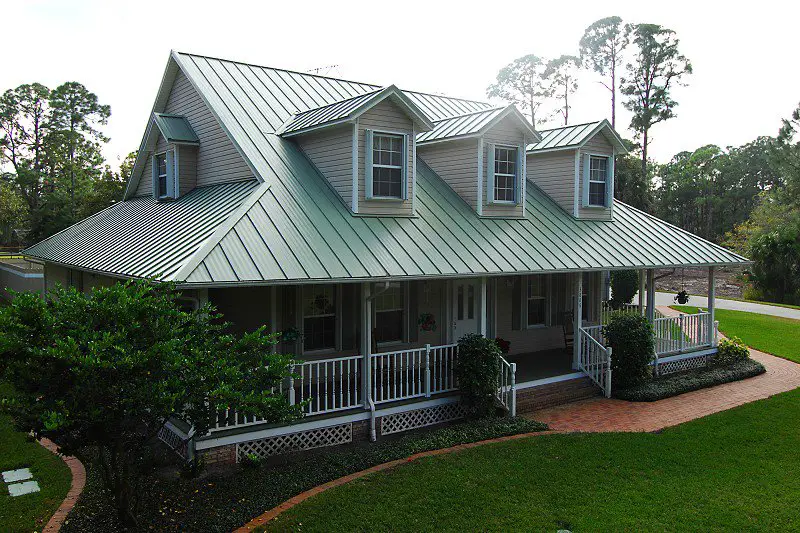
Can I install metal roofing directly over shingles?
In most cases, it’s totally safe to have metal roofing installed over shingles. So long as the roof isn’t too heavy and it’s in good condition, you shouldn’t have any problems.
Installing metal roofing directly over shingles is a common practice that many homeowners consider when it’s time to replace their roof. This method offers several advantages, including cost savings and reduced labor. However, it’s important to understand the process and potential challenges before deciding to install metal roofing over shingles.
Homeowners can save on labor and disposal fees.
The first step in installing metal roofing over shingles is to ensure that the existing roof is in good condition. Any damaged or deteriorated shingles should be replaced before proceeding. Next, a layer of underlayment, such as roofing felt, should be installed to provide additional protection against moisture. This underlayment helps prevent water infiltration and acts as a barrier between the metal roofing and the shingles.
While installing metal roofing over shingles can be a viable option, there are a few challenges and considerations to keep in mind. One important factor is the added weight of the metal roofing. It’s crucial to ensure that the existing roof structure can support the additional load. Consulting with a structural engineer or roofing professional is recommended to assess the structural integrity of the roof.
Another consideration is the potential for trapped moisture between the metal roofing and the shingles. Proper ventilation and insulation are essential to prevent condensation and moisture buildup, which can lead to mold and rot. It’s important to follow manufacturer guidelines and local building codes to ensure proper installation and ventilation.
Installing metal roofing directly over shingles can be a cost-effective and energy-efficient option. However, it’s crucial to assess the condition of the existing roof, consider the added weight, and ensure proper ventilation and insulation. Consulting with professionals and following manufacturer guidelines will help ensure a successful installation.
What is the best way to put a metal roof over a shingle roof?
When it comes to roofing options, metal roofs have gained popularity due to their durability, longevity, and energy efficiency. If you already have a shingle roof and are considering installing a metal roof over it, there are a few important factors to consider. In this article, we will discuss the best way to put a metal roof over a shingle roof, ensuring a successful and long-lasting installation.
Assessing the Existing Shingle Roof:
Before proceeding with installing a metal roof over a shingle roof, it is crucial to assess the condition of the existing shingles. This will provide a clean and stable base for the metal roof and prevent any potential issues in the future.
Preparing the Roof Surface:
Once you have determined that the existing shingles are in good condition, the next step is to prepare the roof surface. Start by thoroughly cleaning the shingles to remove any dirt, debris, or moss. This can be done using a broom or a pressure washer. Additionally, it is essential to inspect the roof for any signs of leaks or damage. Address any necessary repairs before proceeding with the metal roof installation.
Installing the Metal Roof:
When it comes to installing a metal roof over a shingle roof, there are two primary methods: the direct-to-deck method and the batten method. The direct-to-deck method involves installing the metal panels directly onto the roof deck, while the batten method involves installing vertical battens over the shingles and then attaching the metal panels to the battens.
Both methods have their advantages and considerations, and the choice depends on factors such as the roof pitch, local building codes, and personal preference. It is recommended to consult with a professional roofing contractor to determine the best method for your specific situation.
Installing a metal roof over a shingle roof can be a viable option if the existing shingles are in good condition. Assessing the shingles, preparing the roof surface, and choosing the appropriate installation method are crucial steps to ensure a successful and long-lasting metal roof installation. By following these guidelines and consulting with a professional, you can enjoy the benefits of a durable and energy-efficient metal roof.
Can you put a metal roof over 2 layers of shingles?
Firstly, adding a metal roof over two layers of shingles can significantly increase the weight on the roof structure. Metal roofs are generally heavier than shingles, and adding another layer of shingles on top of the existing ones further adds to the load. This additional weight can put excessive stress on the roof structure, potentially leading to structural damage or even collapse. Therefore, it is crucial to assess the weight-bearing capacity of the roof before considering such an installation.
Secondly, installing a metal roof over two layers of shingles can affect the overall performance and lifespan of the new roof. The existing shingles may have uneven surfaces, which can prevent proper installation of the metal panels. This can result in gaps or unevenness, compromising the roof’s ability to shed water and increasing the risk of leaks. Additionally, the trapped heat between the layers of shingles can cause the metal roof to overheat, reducing its durability and longevity.
Thirdly, local building codes and regulations may prohibit installing a metal roof over two layers of shingles. Building codes are in place to ensure the safety and structural integrity of buildings. They often specify the maximum number of roofing layers allowed, and exceeding this limit can result in code violations. Therefore, it is essential to consult with local authorities or a professional roofing contractor to determine the specific regulations in your area.
While it may be tempting to install a metal roof over two layers of shingles for convenience or cost-saving purposes, it is generally not recommended. The potential risks and issues associated with this installation method outweigh the benefits. It is advisable to consult with a professional roofing contractor who can assess the condition of your roof and provide expert guidance on the best course of action for your specific situation.
Can you put a metal roof on top of another roof?
Let’s get the big one out of the way: yes, installing a new metal roof directly on top of an existing one will dramatically speed up your roofing job.
When it comes to roofing options, metal roofs have gained significant popularity in recent years. However, if you already have an existing roof, you might be wondering if it is possible to install a metal roof on top of it. The answer to this question depends on several factors, including the condition of your current roof, local building codes, and the type of metal roof you plan to install.
In some cases, it is indeed possible to install a metal roof over an existing roof. This method is known as a “”roof-over”” or “”overlay”” installation. It involves placing the metal panels directly on top of the existing roof, without removing the old roofing materials. This can be a cost-effective option, as it eliminates the need for tearing off the old roof and disposing of the materials. However, it is important to note that not all roofs are suitable for this type of installation.
The first consideration is the condition of your current roof. If your existing roof is in poor condition, with leaks, rot, or structural issues, it is not advisable to install a metal roof over it. The underlying problems will only worsen over time and could compromise the integrity of the new metal roof. It is crucial to have a professional roofing contractor assess the condition of your roof before proceeding with a roof-over installation.
Consider is local building codes and regulations.
Some areas have specific requirements for roof installations, including the number of layers allowed. If your local building codes prohibit installing multiple layers of roofing materials, you may not be able to put a metal roof on top of your existing roof. It is essential to check with your local authorities or consult a professional roofing contractor to ensure compliance with the regulations.
These systems often include a layer of insulation or an air gap between the old roof and the metal panels. It is crucial to choose a metal roof that is compatible with a roof-over installation if you decide to go down this route.
While it is possible to put a metal roof on top of another roof in certain circumstances, it is not always recommended or feasible. The condition of your current roof, local building codes, and the type of metal roof you plan to install are all important factors to consider. It is best to consult with a professional roofing contractor who can assess your specific situation and provide expert advice on the most suitable roofing options for your home.
Why not put metal roof over shingles?
Advantages of Installing a Metal Roof over Shingles:
One of the primary advantages of installing a metal roof over shingles is the cost savings it offers. By avoiding the labor-intensive process of removing the old shingles, homeowners can significantly reduce the overall installation costs.
Another advantage is the added layer of insulation that the existing shingles provide. The shingles act as a thermal barrier, preventing heat transfer between the metal roof and the interior of your home. This can result in improved energy efficiency and reduced heating and cooling costs.
Disadvantages of Installing a Metal Roof over Shingles:
While there are several advantages to installing a metal roof over shingles, it is important to consider the potential disadvantages as well. One of the main concerns is the added weight that the metal roof will impose on the existing structure. Shingles are relatively lightweight, whereas metal roofs can be significantly heavier. It is crucial to ensure that your home’s structure can support the additional weight before proceeding with this installation method.
Another disadvantage is the potential for trapped moisture between the metal roof and the shingles.
Installing a metal roof over shingles can be a viable option for homeowners seeking cost savings and convenience.
A successful and durable installation
Installing a metal roof over shingles involves several important steps to ensure a successful and durable installation. Firstly, it is crucial to thoroughly inspect the existing shingles for any signs of damage or deterioration. Any damaged shingles should be replaced before proceeding with the installation. Additionally, it is important to ensure that the roof structure is in good condition and capable of supporting the added weight of the metal roof.
Once the roof has been inspected and prepared, the next step is to install a layer of underlayment. This underlayment acts as a moisture barrier and helps to prevent any potential leaks. It is recommended to use a high-quality synthetic underlayment that is specifically designed for metal roofs.
Are there any specific tools or materials required for this installation process?
Installing a metal roof over shingles requires certain tools and supplies. This includes:
Tools: Successful installation requires several tools. Ladders, tape measures, chalk lines, roofing nails, screws, drills, screw guns, metal roofing shears or tin snips, hammers, pry bars, and roofing nail guns are necessary. You may also need a metal roofing roller, bending tool, and crimping tool, depending on your job.
Materials: Installation requires tools and certain materials. Metal roofing panels, underlayment, flashing, ridge caps, sealer, and trim are included. High-quality materials that suit your climate and meet manufacturer requirements for installation over shingles are essential.
Metal roof over shingles installation can be easy and efficient with the right tools and materials. Always contact a professional or the manufacturer’s guidelines for project-specific tool and material requirements.
Can a metal roof be installed over any type of shingles, or are there specific requirements?
Not all shingles can be used to lay a metal roof over. A good metal roof installation over one layer of asphalt shingles requires certain conditions.
First, the shingles must be in good condition and secure. Repair or replace loose or broken shingles before installing the metal roof. Additionally, the roof deck must be sturdy enough to support the metal roof. Consider hiring a roofing contractor to inspect the roof deck and shingles.
Shingle kind is also essential. Metal roofs can be put over asphalt shingles, but wood or slate shingles may need preparation or removal. Check the manufacturer’s instructions and local building codes to see whether the shingles have any unique requirements.
Are there any potential challenges or considerations to keep in mind when installing a metal roof over shingles?
To successfully install a metal roof over shingles, various problems and factors must be considered. Metal roof weight is a major issue. Metal roofs are heavier than shingles, thus the roof structure must be able to sustain them. The roof structure may need to be reinforced before installing the metal roof to avoid structural difficulties.
Shingle condition is another factor. Do not put a metal roof over broken or decaying shingles. This can reduce its performance and durability. Before installing, check and replace damaged shingles.
Installing a metal roof over shingles requires sufficient ventilation. Adequate ventilation prevents moisture buildup and mold or rot. To keep the roof healthy and long-lasting, the ventilation system must be correctly designed and implemented.
Are there any potential challenges or considerations to keep in mind when installing a metal roof over shingles?
To successfully install a metal roof over shingles, various problems and factors must be considered. Metal roof weight is a major issue. Metal roofs are heavier than shingles, so make sure the roof structure can handle it. The roof structure may need reinforcement before installing the metal roof.
Shingle condition is another factor. Old, broken, or uneven shingles might hinder metal roof installation. Before installing the metal roof, inspect the shingles for damage. The shingles must be properly secured to the roof to prevent movement and damage to the metal roof.
Installing a metal roof over shingles requires sufficient ventilation. Heat buildup on metal roofs without sufficient ventilation can cause moisture problems and roof damage. Ventilation should be provided to ensure airflow and prevent issues.
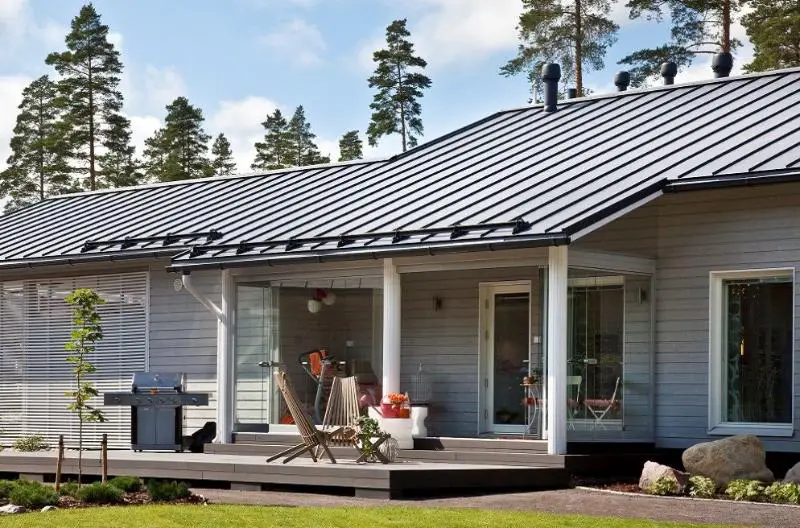
Conclusion
One of the key advantages of installing a metal roof over shingles is the added protection it provides. Metal roofs are highly resistant to extreme weather conditions such as heavy rain, snow, and strong winds. This durability ensures that your home remains safe and secure, even during the harshest weather events. Additionally, metal roofs are fire-resistant, reducing the risk of damage or destruction in the event of a fire.
Another benefit of installing a metal roof over shingles is the potential for energy savings. Metal roofs are known for their excellent insulation properties, which can help regulate the temperature inside your home. This insulation reduces the need for excessive heating or cooling, resulting in lower energy bills. Additionally, metal roofs are often made from recycled materials, making them an environmentally friendly choice.
Furthermore, Install metal roof over shingles can significantly enhance the curb appeal of your home. Installing a metal roof over shingles is a practical and beneficial home improvement project. It offers increased protection, energy savings, and enhanced curb appeal. By following the provided instructions and taking the necessary precautions, you can successfully complete this project and enjoy the long-lasting benefits of a metal roof. Whether you are looking to upgrade your roof for personal enjoyment or to increase the value of your home, installing a metal roof over shingles is a wise investment.



